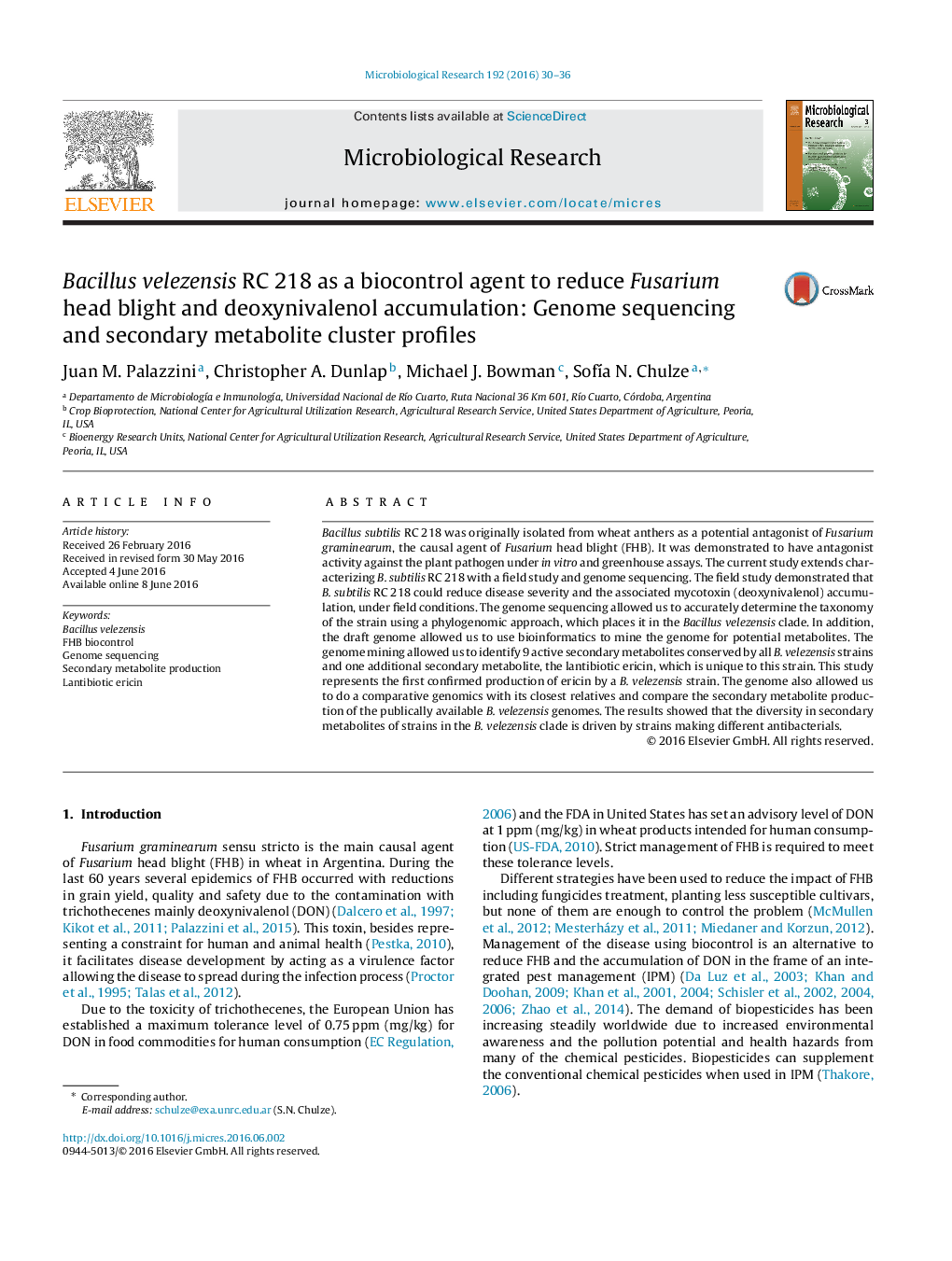| Article ID | Journal | Published Year | Pages | File Type |
|---|---|---|---|---|
| 2091853 | Microbiological Research | 2016 | 7 Pages |
Bacillus subtilis RC 218 was originally isolated from wheat anthers as a potential antagonist of Fusarium graminearum, the causal agent of Fusarium head blight (FHB). It was demonstrated to have antagonist activity against the plant pathogen under in vitro and greenhouse assays. The current study extends characterizing B. subtilis RC 218 with a field study and genome sequencing. The field study demonstrated that B. subtilis RC 218 could reduce disease severity and the associated mycotoxin (deoxynivalenol) accumulation, under field conditions. The genome sequencing allowed us to accurately determine the taxonomy of the strain using a phylogenomic approach, which places it in the Bacillus velezensis clade. In addition, the draft genome allowed us to use bioinformatics to mine the genome for potential metabolites. The genome mining allowed us to identify 9 active secondary metabolites conserved by all B. velezensis strains and one additional secondary metabolite, the lantibiotic ericin, which is unique to this strain. This study represents the first confirmed production of ericin by a B. velezensis strain. The genome also allowed us to do a comparative genomics with its closest relatives and compare the secondary metabolite production of the publically available B. velezensis genomes. The results showed that the diversity in secondary metabolites of strains in the B. velezensis clade is driven by strains making different antibacterials.
Graphical abstractFigure optionsDownload full-size imageDownload as PowerPoint slide
